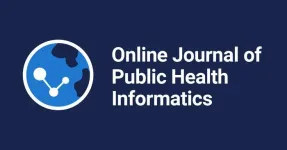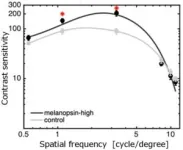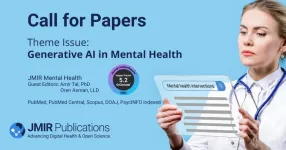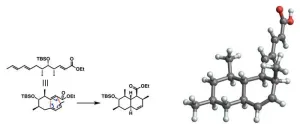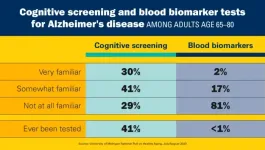(Press-News.org) (Toronto July 19, 2023) Fully open access publisher JMIR Publications has acquired the Online Journal of Public Health Informatics (OJPHI), expanding its portfolio to 35 gold open access journals. This acquisition marks an open access milestone in JMIR Publications’ continued mission to keep openness at the heart of what it does.
Indexed in PubMed Central, OJPHI has been delivering the latest developments in the emerging field of public health informatics since 2009. The journal publishes research articles, book reviews, technology reviews, working papers, interviews, commentaries, and handpicked student capstone projects.
All OJPHI content and manuscript submissions are now available at ojphi.jmir.org. The journal will align to JMIR Publications’ existing editorial policies and practices.
OJPHI founder and Editor-in-Chief Edward Mensah is an Emeritus Associate Professor at the University of Illinois Chicago. Professor Mensah, who also co-founded and chaired the very first Public Health Informatics graduate program in the United States, writes in his editorial after migration to the JMIR platform, “Joining JMIR Publications, an established and top-notch publisher, positions OJPHI within a wider ecosystem of open-access biomedical and health informatics journals. We now have the facilities needed to reach out to a diverse group of authors and readers from universities, public health agencies, and policy makers in developed countries and the Global South. JMIR Publications provides us with the platform to improve the quality of the journal, article turnaround time, and become the public and population health informatics journal of choice by our stakeholders.”
Gunther Eysenbach, founder of JMIR Publications, commented, “JMIR Publications is pleased to welcome OJPHI into our family of journals. The addition of the journal, with Professor Mensah at its helm as Editor-in-Chief, complements our existing portfolio and adds high-quality research publications and authors to the community, expanding our vision of advancing digital health and open science.”
David Kim, Director of Partnerships and Open Access Research at JMIR Publications, stated, “OJPHI and JMIR Publications share in the vision that high-quality public health research should be openly available to all. JMIR Publications is very excited to welcome the OJPHI community and work together towards addressing some of our world’s most pressing public health issues. We look forward to supporting the efforts of Professor Mensah and the excellent editorial board members as we collectively aspire for a happier and healthier world.”
###
About the Online Journal of Public Health Informatics
The official announcement from the OJPHI is available at https://ojphi.jmir.org/announcements/393. All published content from the OJPHI is available at https://ojphi.jmir.org/. This journal is double-blind peer reviewed.
About Professor Edward Mensah
Dr Edward Mensah is an Emeritus Associate Professor of Health Economics and Informatics, Health Policy and Administration Division, at the School of Public Health, University of Illinois Chicago (UIC). He is the Founding Director Emeritus of the graduate Public Health Informatics program at the UIC and a founding member of the Health Informatics and Information Technology session (HIIT) of the American Public Health Association (APHA).
He has served as a subject matter expert in developing value propositions for public health informatics projects at the Centers for Disease Control and Prevention (CDC). Professor Mensah is also the founding editor of the OJPHI, a visiting professor (measurement of well-being) at the Department of Business Economics at the University of Lille (France), and an external examiner at the University of Cape Coast (Ghana).
He was the principal investigator of the federally funded Health Information Exchange program for the State of Illinois and has served as a visiting scholar in Economics at the University of Chicago. His areas of research include health economics and policy, public health informatics, health services research, and eHealth valuation. He has published over 35 articles in peer-reviewed journals.
About JMIR Publications
JMIR Publications is a leading, born-digital, open access publisher of 30+ academic journals and other innovative scientific communication products that focus on the intersection of health and technology. Its flagship journal, the Journal of Medical Internet Research, is the leading digital health journal globally in content breadth and visibility, and is the largest journal in the medical informatics field.
To learn more about JMIR Publications, please visit jmirpublications.com or connect with us via Twitter, LinkedIn, YouTube, Facebook, and Instagram.
Head office: 130 Queens Quay East, Unit 1100, Toronto, ON, M5A 0P6 Canada
Media contact: communications@jmir.or
END
JMIR Medical Education (2023 Impact Factor 5.2) and Guest Editors: Amir Tal, PhD, and Oren Asman, LLD welcome submissions to a special theme issue examining "Responsible Design, Integration, and Use of Generative AI in Mental Health"
This special theme issue aims to unite various stakeholders in exploring the responsible use of generative artificial intelligence (GAI) within the mental health domain. The goal is to curate a collection of articles that examine the advantages, challenges, and potential risks associated with deploying GAI models ...
Prof Sei-ichi Tsujimura of the Nagoya City University and Prof Su-Ling Yeh of National Taiwan University and Kagoshima University, have discovered that our visual acuity (contrast sensitivity) can be improved by using a light with a special spectrum that can selectively stimulate melanopsin cells in the retina.
Background
The retina of our eye contains cone photoreceptor cells, which identify colors in bright environment, and rod photoreceptor cells, which work in the dark. It has long been thought that humans see and identify objects by these two types of photoreceptor cells alone. ...
Intermittent rivers and ephemeral streams are the world's dominant river ecosystem, yet monitoring and management typically focus on rivers that flow year round. Writing in BioScience, Amélie Truchy of the French National Research Institute for Agriculture, Food, and the Environment (INRAE) and colleagues describe the problem, as well as a potential solution: citizen science.
The authors discuss the results from a new app, DRYRivERS, which allows scientist and nonscientist users alike to record data on ephemeral streams and intermittent ...
For millions of Americans who have heart surgery or experience cardiovascular complications, like heart attack or heart failure, they may be encouraged to participate in cardiac rehabilitation. The medically supervised program combines lifestyle changes, education and physical activity to help patients recover and reduce their risk of future problems.
A Michigan Medicine study now finds that people who participate in cardiac rehabilitation have a decreased risk of death years after surgery, with a trend towards better outcomes in patients who attend more sessions.
“Time and time again, cardiac rehabilitation has been shown to ...
As life expectancy increases worldwide, age-associated diseases such as osteoporosis are having an increasing impact. Although early detection could help physicians intervene as soon as possible — when treatment might offer the greatest benefit — this type of detection is not yet possible with current osteoporosis diagnostic tests. Now, researchers reporting in ACS Central Science have developed a biosensor that could someday help identify those most at risk for osteoporosis using less than a drop of blood.
Early intervention is critical to reducing the morbidity and mortality associated with osteoporosis, a condition characterized by an elevated ...
Whether enjoyed on its own or mixed into a latte, Americano or even a martini, espresso provides an ultra-concentrated jolt of caffeine to coffee lovers. But it might do more than just wake you up. Research now published in ACS’ Journal of Agricultural and Food Chemistry shows that, in preliminary in vitro laboratory tests, espresso compounds can inhibit tau protein aggregation — a process that is believed to be involved in the onset of Alzheimer’s disease.
Roughly half of all Americans drink coffee every day, and espresso is a popular way to consume ...
Almost everyone has a bag of veggies shoved into the dark recesses of their freezer that’s now essentially an unrecognizable block of ice crystals. And when thawed, foods damaged by excessive ice lose their texture and become mushy. Now, researchers reporting in ACS’ Journal of Agricultural and Food Chemistry have shown that broken-down soy proteins can prevent ice crystal growth and could be especially useful for preserving frozen vegan foods or biological samples.
Some animals that ...
The discovery of antibiotics in 1928 was a major turning point in the history of medicine. For the first time since the dawn of human civilization, doctors had gained access to an extremely powerful and effective tool to fight against a wide variety of bacterial infections. Today, bacterial diseases that were previously a death sentence can be cured, and infections following surgery or chemotherapy can be prevented or treated more effectively.
Unfortunately, the worldwide use (and abuse) of antibiotics led to the emergence of drug-resistant bacterial strains. Over time, bacteria that could normally be killed by ...
Eighty percent of older adults see the benefit of tests that can give an early warning that a person’s memory and thinking abilities have started to decline, a new poll of people age 65 to 80 finds. And 60% think that health care providers should offer cognitive screening, in the form of brief memory tests, to all older adults every year.
If they had a cognitive screening test and it showed signs of trouble, the vast majority of those polled said it would spur them to take action to protect their brain health (96%) and adjust their financial and health ...
Using the Atacama Large Millimeter/submillimeter Array (ALMA), astronomers have found the possible ‘sibling’ of a planet orbiting a distant star. The team has detected a cloud of debris that might be sharing this planet’s orbit and which, they believe, could be the building blocks of a new planet or the remnants of one already formed. If confirmed, this discovery would be the strongest evidence yet that two exoplanets can share one orbit.
“Two decades ago it was predicted in theory that pairs of planets of similar mass may share the same orbit around their star, the so-called Trojan or co-orbital planets. For the first time, we have found evidence ...
